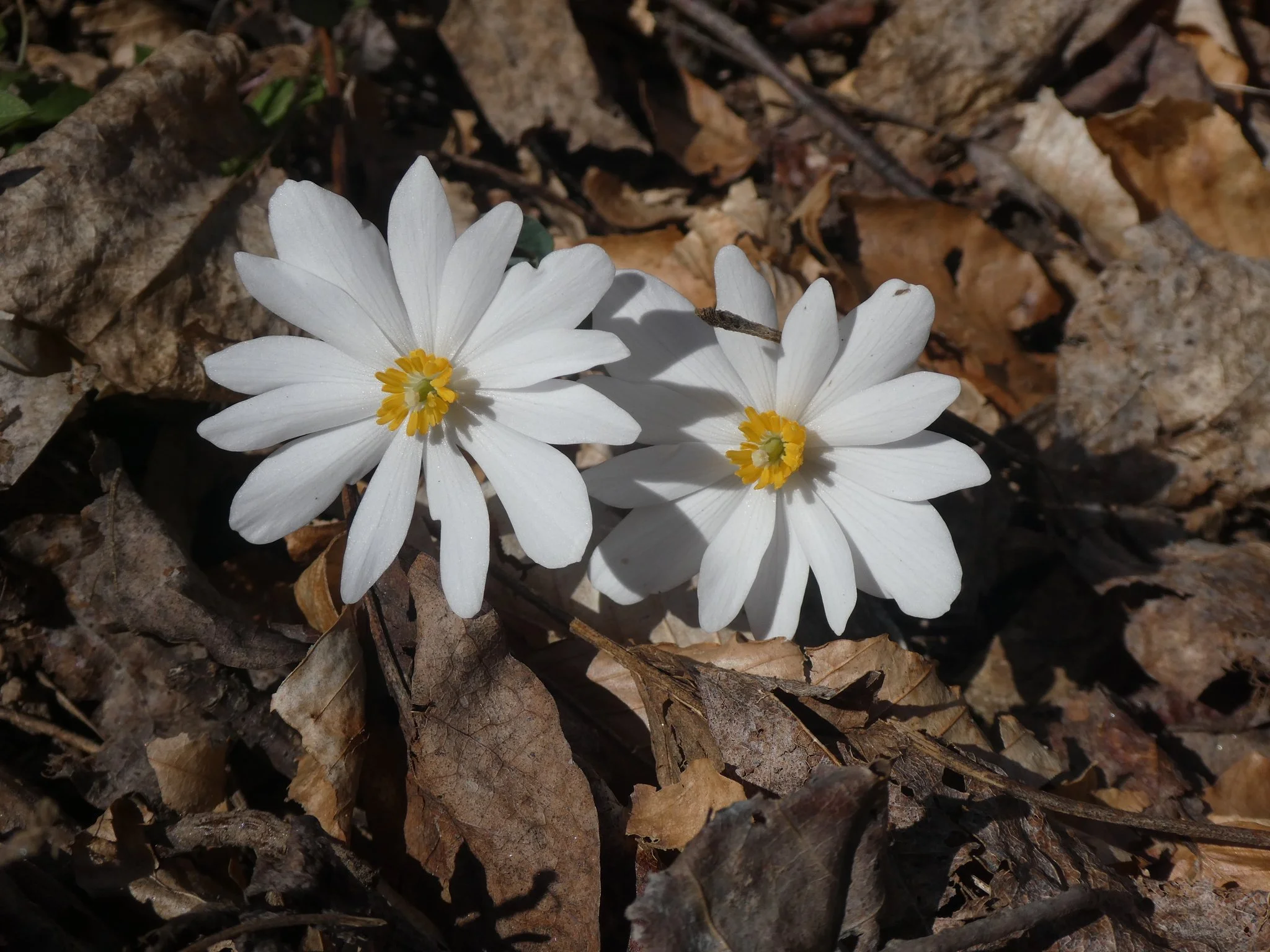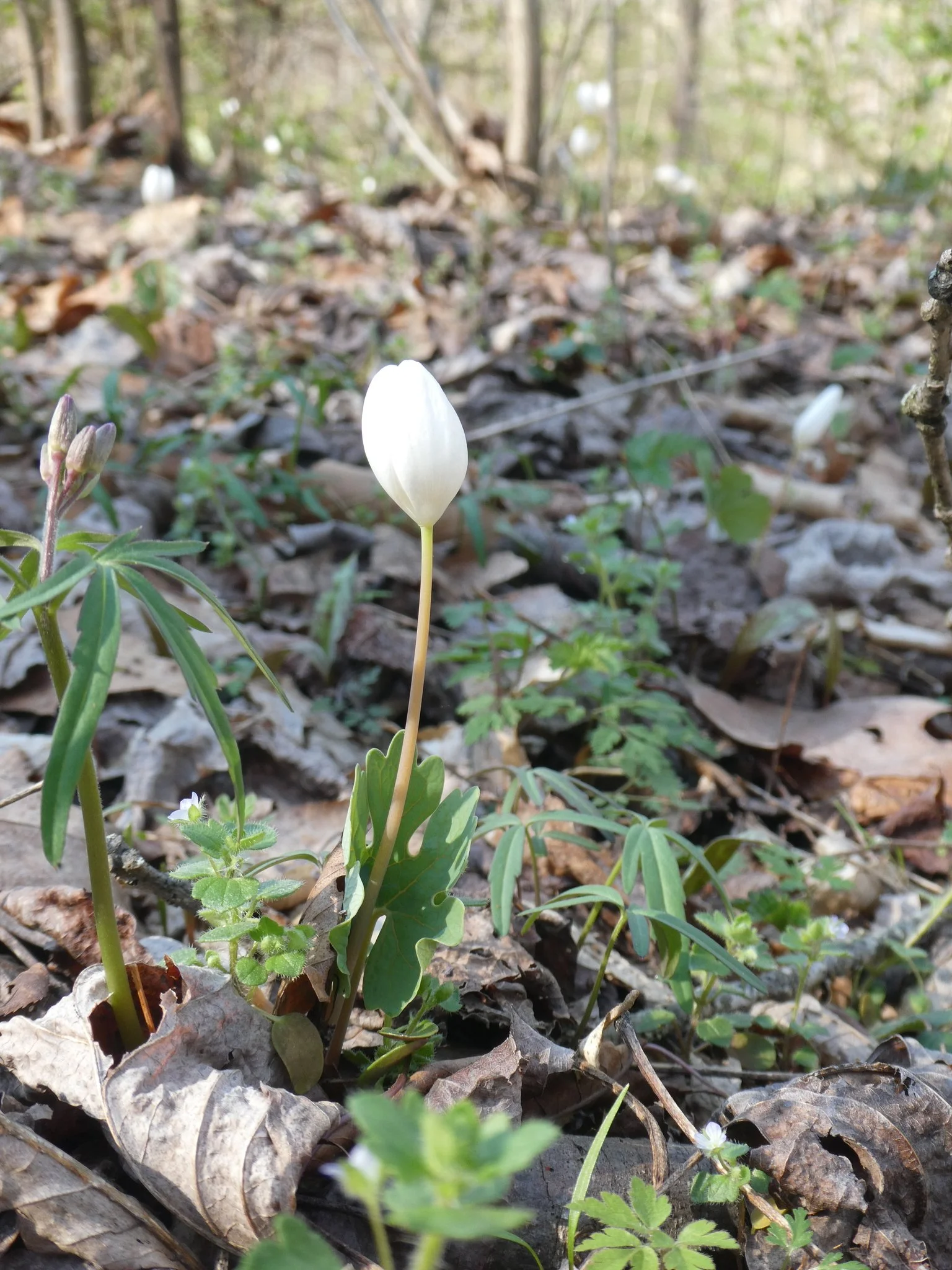Plant of the Week 1: Bloodroot (Sanguinaria canadensis)
One of the first wildflowers to emerge from the forest floor, Bloodroot begins blooming in early spring during March and April. A member of the Poppy family, this beautiful herbaceous perennial is a fairly common sight in many wooded areas in Maryland.
The scientific name comes from the latin word sanguinarius, which means “bleeding”. This is because of a bright red-orange sap that is found in the roots. The Native Americans used the sap as a dye for a variety of things from clothes to war paint. Be careful, though, because this sap is toxic and can irritate the skin.
Bloodroot can be found throughout the Eastern United States, particularly in nutrient rich, deciduous forests. It can also be found along wooded slopes, riverbanks, floodplains, and along woodland paths. Look for this flower at most parks around the DMV, including Blockhouse Conservation Park, Rock Creek Regional Park, along the Potomac River, and Scotts Run Nature Preserve.
Flowers are very showy and are white, usually with 8 - 16 petals and a bright yellow center. Each individual flower is short lived (about 1 or 2 days) with a slight pleasant fragrance. The flowers eventually lead to a green seed pod in April or May, that splits open to release the seeds that are inside. Ants are critical in dispersing these seeds, as they are attracted to the elaiosomes (small appendages on seeds).
The leaves open up around the same time as the flowers, and have an unusual but still attractive shape. They can grow up to 6 inches across and have 3 to 9 lobes. Foliage may go dormant by mid-summer, but bloodroot leaves can be seen into September and even October.



